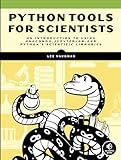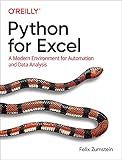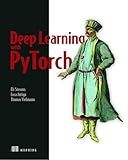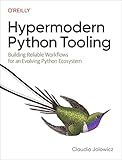Best Tools for Python Packaging to Buy in December 2025

Python Tools for Scientists: An Introduction to Using Anaconda, JupyterLab, and Python's Scientific Libraries



Python for Excel: A Modern Environment for Automation and Data Analysis



Programming Computer Vision with Python: Tools and algorithms for analyzing images



Python Data Science Handbook: Essential Tools for Working with Data



Deep Learning with PyTorch: Build, train, and tune neural networks using Python tools



Python Tools for Data Scientists Pocket Primer



Hypermodern Python Tooling: Building Reliable Workflows for an Evolving Python Ecosystem



Python and SQL Bible: From Beginner to World Expert: Unleash the full potential of data analysis and manipulation by mastering Python and SQL


PyInstaller is a tool used to convert Python scripts into standalone executable files. To use PyInstaller correctly, you will first need to install it using pip. Once installed, navigate to the directory containing your Python script and run the command 'pyinstaller your_script.py' in the terminal. PyInstaller will then analyze your script and bundle it along with all its dependencies into a single executable file. You can customize the behavior of the executable by providing additional options to the PyInstaller command. Finally, test the generated executable to ensure it runs correctly on your system and distribute it to others as needed.
How to install PyInstaller on Linux?
To install PyInstaller on Linux, you can follow these steps:
- Open a terminal window.
- Make sure you have the latest version of pip, the Python package manager, installed. You can do this by running the following command:
pip install --upgrade pip
- Install PyInstaller using pip by running the following command:
pip install pyinstaller
- Once the installation is complete, you can verify that PyInstaller is installed by running the following command:
pyinstaller --version
This should display the version number of PyInstaller that is installed on your system.
That's it! You have now successfully installed PyInstaller on your Linux system.
What is a spec file in PyInstaller?
A spec file in PyInstaller is a configuration file that contains instructions and settings for how PyInstaller should package the Python script into an executable file. The spec file specifies details such as the location of the Python script, the additional files and packages to include, the icon to use for the executable file, and other options related to the packaging process. It allows for customization and fine-tuning of the executable file's behavior and appearance.
How to create a standalone executable with PyInstaller?
To create a standalone executable with PyInstaller, follow these steps:
- Install PyInstaller: If you haven't already installed PyInstaller, you can do so using pip: pip install pyinstaller
- Create your Python script: Write your Python script that you want to convert into a standalone executable. Save the script in a separate file.
- Create the standalone executable: Open your terminal and navigate to the directory where your Python script is saved. Run the following command to create the standalone executable: pyinstaller --onefile your_script.py
- Wait for the process to complete: PyInstaller will create a 'dist' directory in the same location as your script and store the standalone executable inside it. Wait for the process to complete.
- Test the standalone executable: Once the process is complete, navigate to the 'dist' directory and run the standalone executable file. Test if the executable works as expected.
- Distribute your standalone executable: You can now distribute your standalone executable to others without the need for them to have Python or any dependencies installed.
That's it! You have successfully created a standalone executable with PyInstaller.
What is the PyInstaller bootloader configuration?
The PyInstaller bootloader configuration is a file that contains settings for the runtime environment in which a PyInstaller bundled application will be executed. This configuration file is generated by PyInstaller during the bundling process and includes settings such as the path to the bundled application, the location of temporary files, and any additional options or parameters specified by the user. The bootloader configuration helps ensure that the bundled application operates correctly on different platforms and configurations.
What is the PyInstaller bootloader path?
The PyInstaller bootloader path is the location where PyInstaller stores the necessary files and libraries to run the bundled executable. By default, the bootloader path is usually located within the PyInstaller distribution directory or the temporary directory where the bundled executable is executed.
What is the PyInstaller runtime hook?
The PyInstaller runtime hook is a mechanism in PyInstaller, which is a program that packages Python applications into standalone executables. The runtime hook is a script that is automatically included in the packaged executable and is responsible for managing the importation of modules and dependencies needed by the application at runtime. This ensures that all the necessary Python modules are available to the application when it is running as a standalone executable. The hook allows the packaged application to function correctly without relying on a separate Python installation on the user's system.
